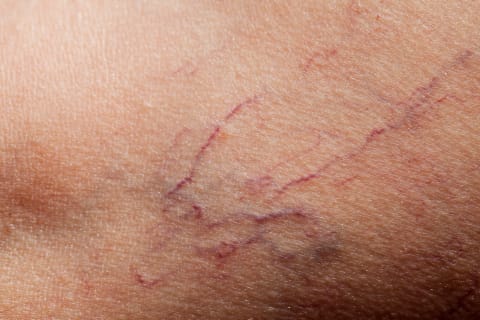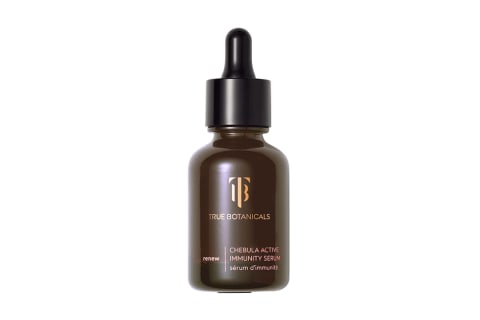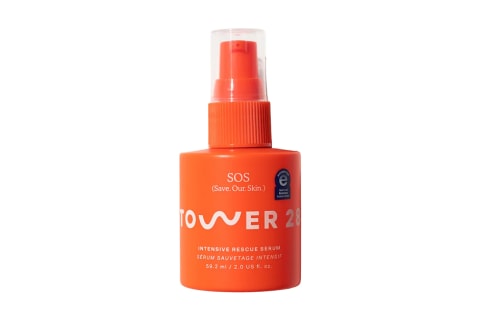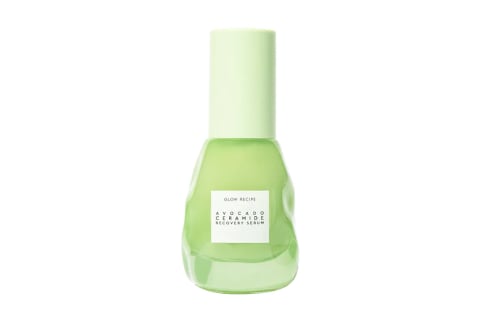If the latter of the list sounds familiar, also commonly referred to as broken capillaries, there may be a cause you’re completely unaware of and more, a few ways to help minimize its appearance should you want to. Consider the following your full guide to broken capillaries, with all of your questions answered. Let’s dive in. “Dilated capillaries, on the other hand, result in tiny red blood vessels that are visible at the skin’s surface,” she says. These fine branchlike vessels are always underneath the surface but may appear more pronounced in certain areas—oftentimes around the nose and on the cheeks. There’s a long list of potential causes for dilated and broken capillaries, some occasional and others not so much. Those with rosacea frequently have these tiny red vessels on display, but more on that in a bit. You may have heard the term “spider veins” to describe broken capillaries spotted on the legs or upper arms—these are extremely common and often appear due to similar causes. These visible vessels may also be referred to as telangiectasia in medical terminology. “These broken blood vessels at the surface are often a hallmark of this skin condition,” board-certified plastic surgeon Jaimie DeRosa tells mbg. So if you’re seeing these tiny vessels on a regular basis, you may want to consider visiting a dermatologist to rule out rosacea before attempting to reduce them via at-home treatment. In order to minimize the occurrence and appearance of broken capillaries, those with rosacea should focus on limiting triggers that lead to inflammation—more on that to follow. Squeezing the skin too hard is considered an “external trauma,” DeRosa says, even if you’re just trying to manually clear out minor blackheads. In short, don’t pop your pimples—even if they seem “ready.” This can be both internal and external heat. So if you’re noticing these capillaries show most after a hard workout, a hot summer day, or after you wash your face with warm water, that may be the cause. She adds that this kind of damage to the skin may lead to bruising, “Causing persistent redness and visible capillaries on the surface of the skin.” In addition to broken capillaries, “UV radiation causes DNA damage that results in loss of collagen, loss of elasticity, and discoloration,” Marcus notes. So if you’re noticing hyperpigmentation or “sun spots in addition to broken capillaries, you’ll want to practice safe sun from here on out."’ Things like spicy foods and caffeine can also contribute, Ross explains, because they can cause stress and inflammation in the body, which then leads to, “Skin stress,” he says. “In addition, there are certain genetic disorders whose symptoms include fragile blood vessels,” she adds. So while you may not be able to control the formation of these broken capillaries, you can reduce their appearance—more to come next. Look for serums and moisturizers with colloidal oat, calendula, and peptides, Ross suggests. Picking up a vitamin C serum may also help, “One of the benefits of vitamin C is that it is an anti-inflammatory bioflavonoid, which helps to stabilize and repair weakened blood vessels,” DeRosa explains. To sum up, try your best to include a few of these ingredients in your topical care: Instead, focus on cooling the skin. Marcus recommends using an ice roller for a gentle and soothing dose of chill—here’s a list of the 9 best options on the market if you’re ready to adopt this step. While Greek yogurt tends to have the best consistency for face masks, you can also choose coconut or soy yogurt for a vegan option—just try to find one that includes added probiotics so your skin microbiome can still reap the benefits. Once you have your yogurt base, you can add in honey, oatmeal, avocado, or even certain herbs—here’s a breakdown with a few different mask recipes and their benefits if you’re ready to whip something up. You can either blend fresh aloe vera or use a premade product—here’s the exact recipe and a bit more about the benefits if you’re curious. Place the rag over your face and leave it there for a few minutes, or until your skin feels soothed. Avoid rubbing the cloth on your face as the physical abrasion may cause a rash or further irritation. As a bonus, if you’re looking for more ways to soothe the skin, here are 10 all-natural tips to get you started.






